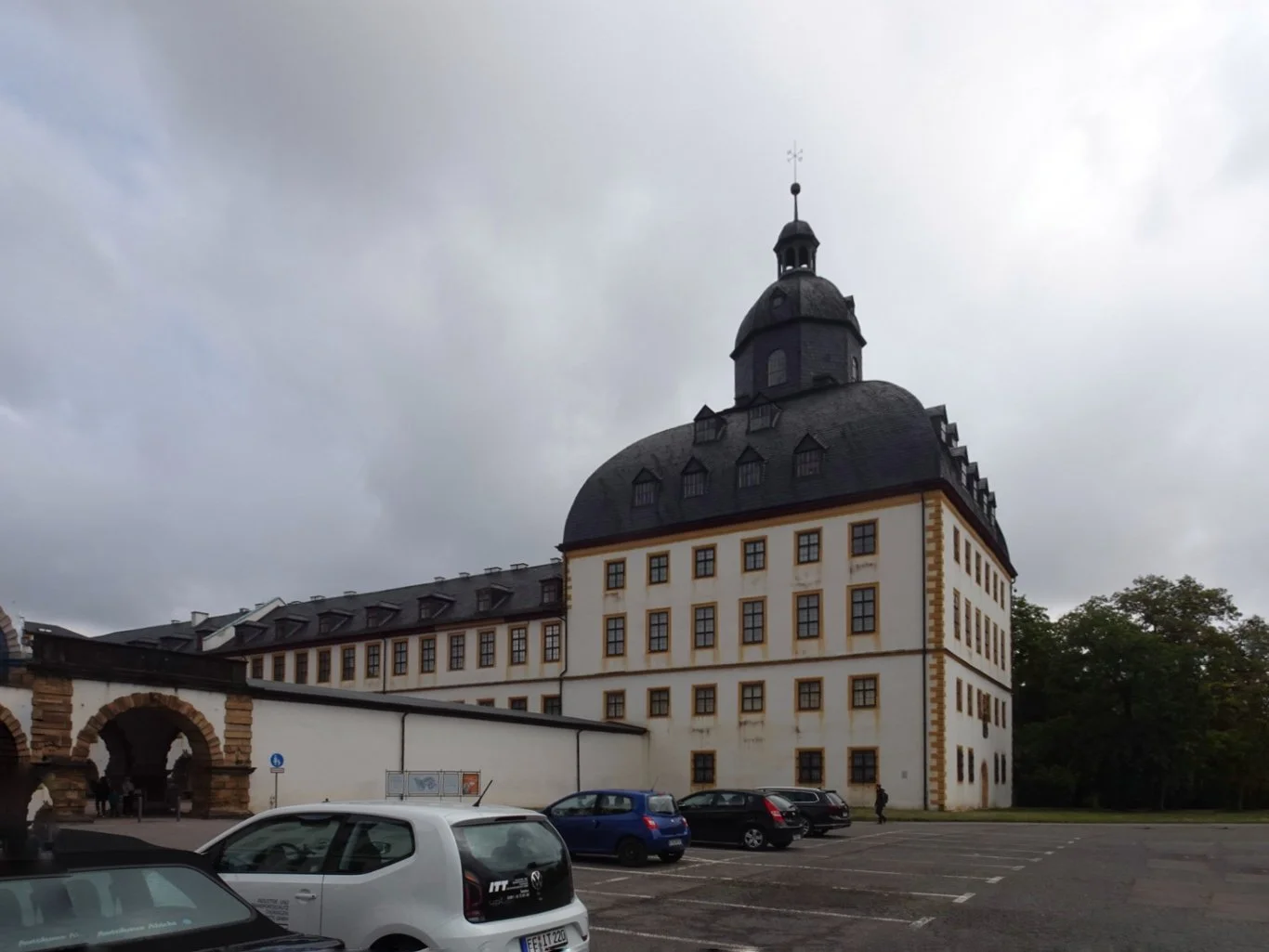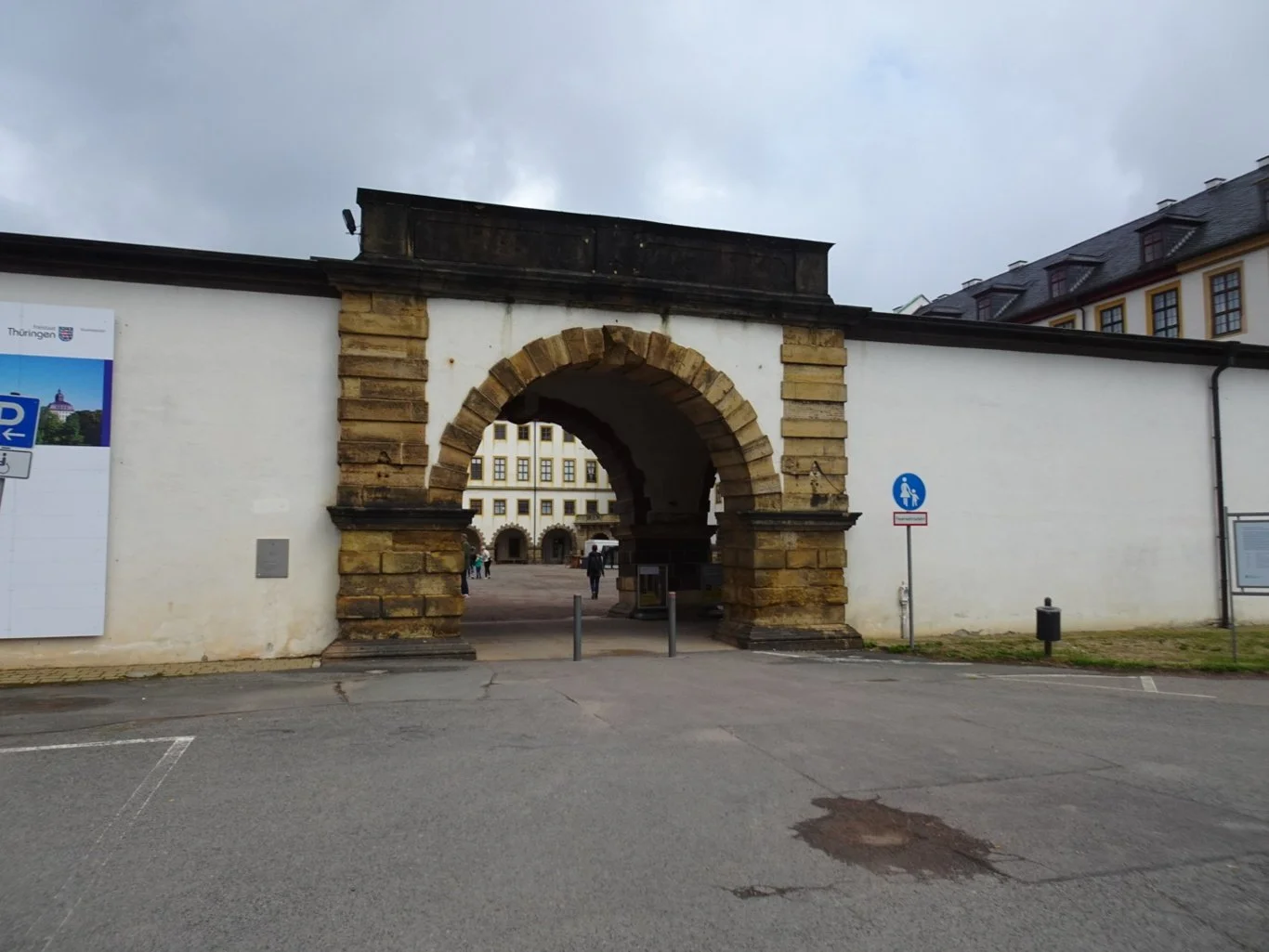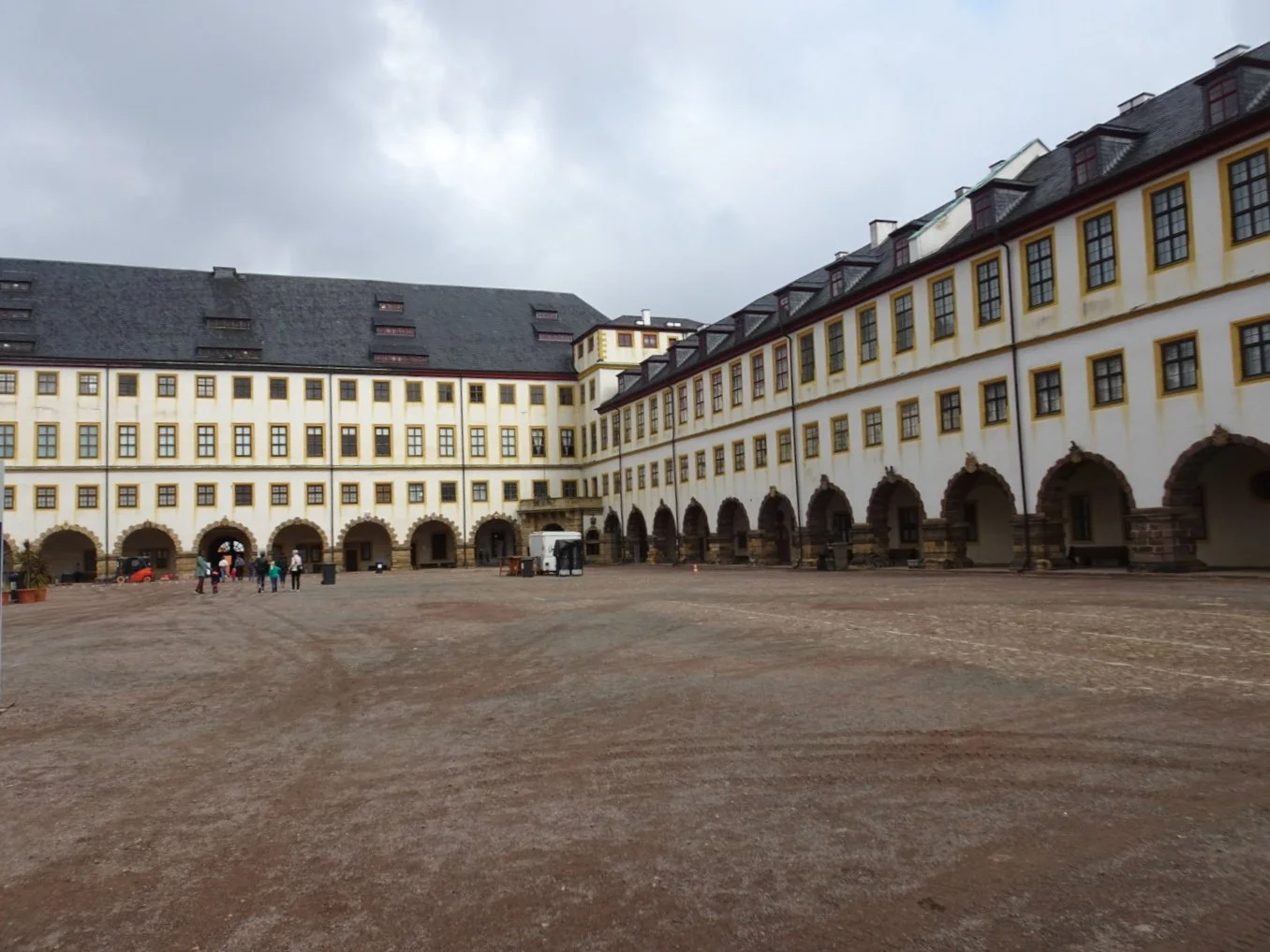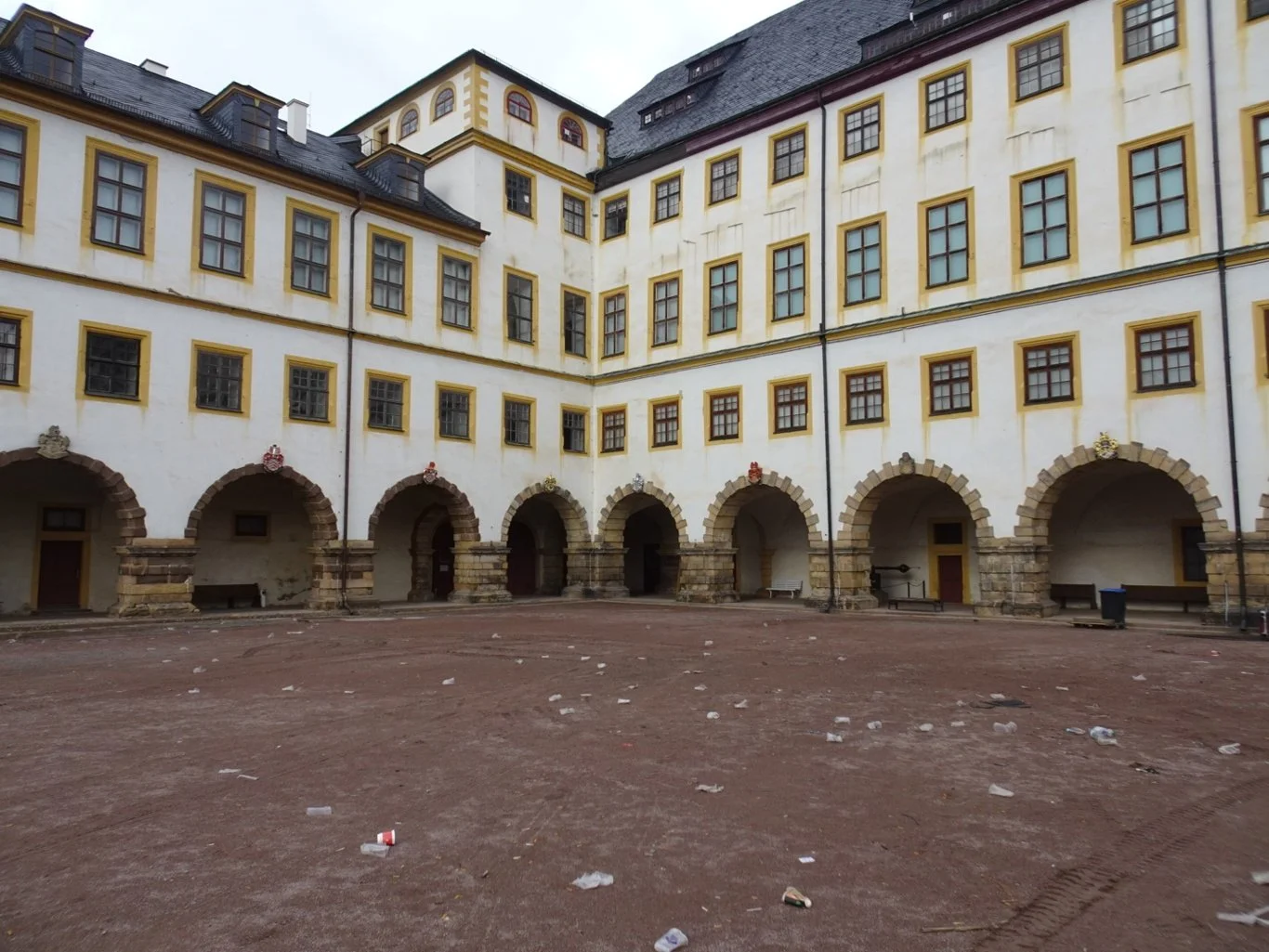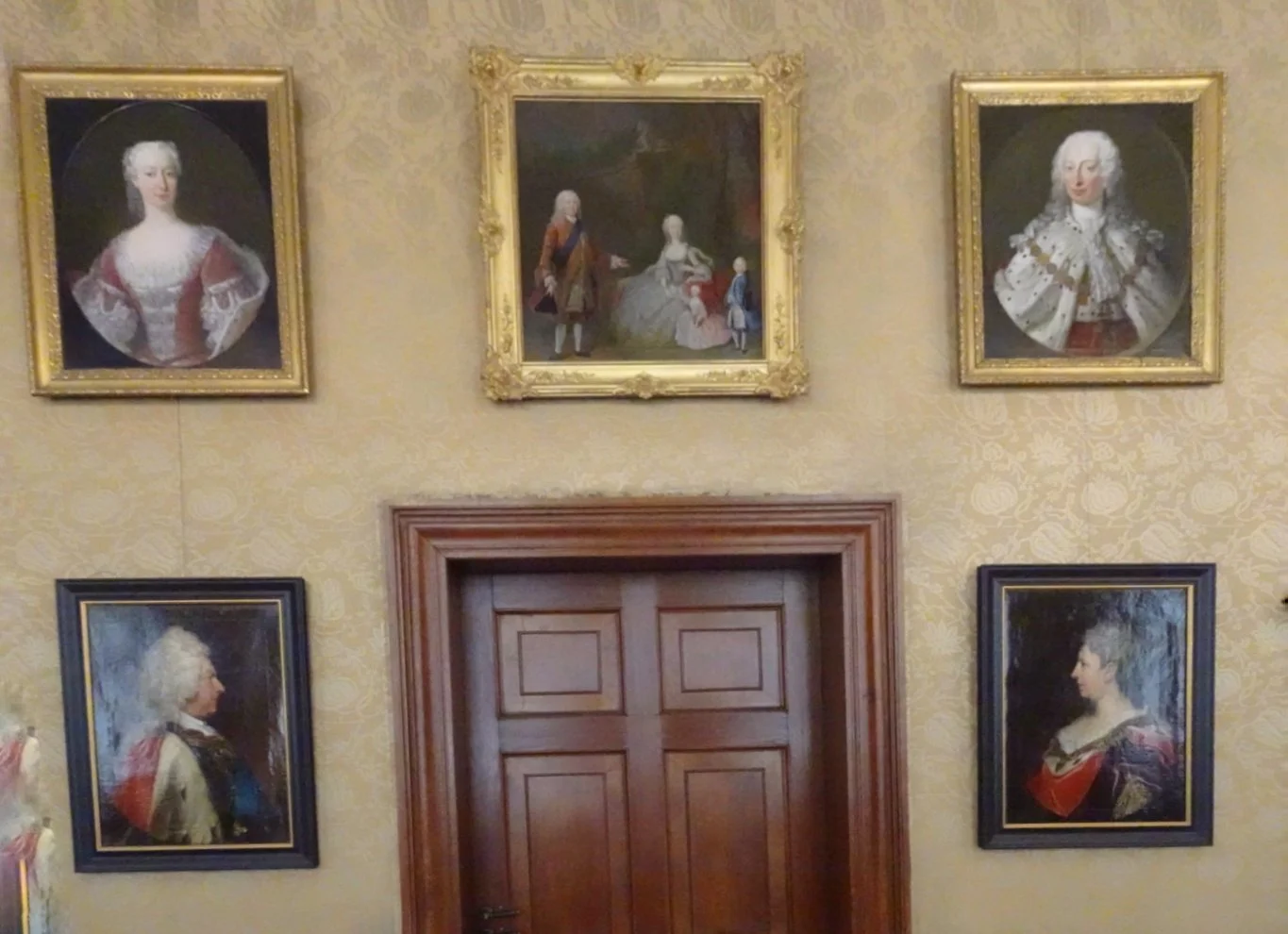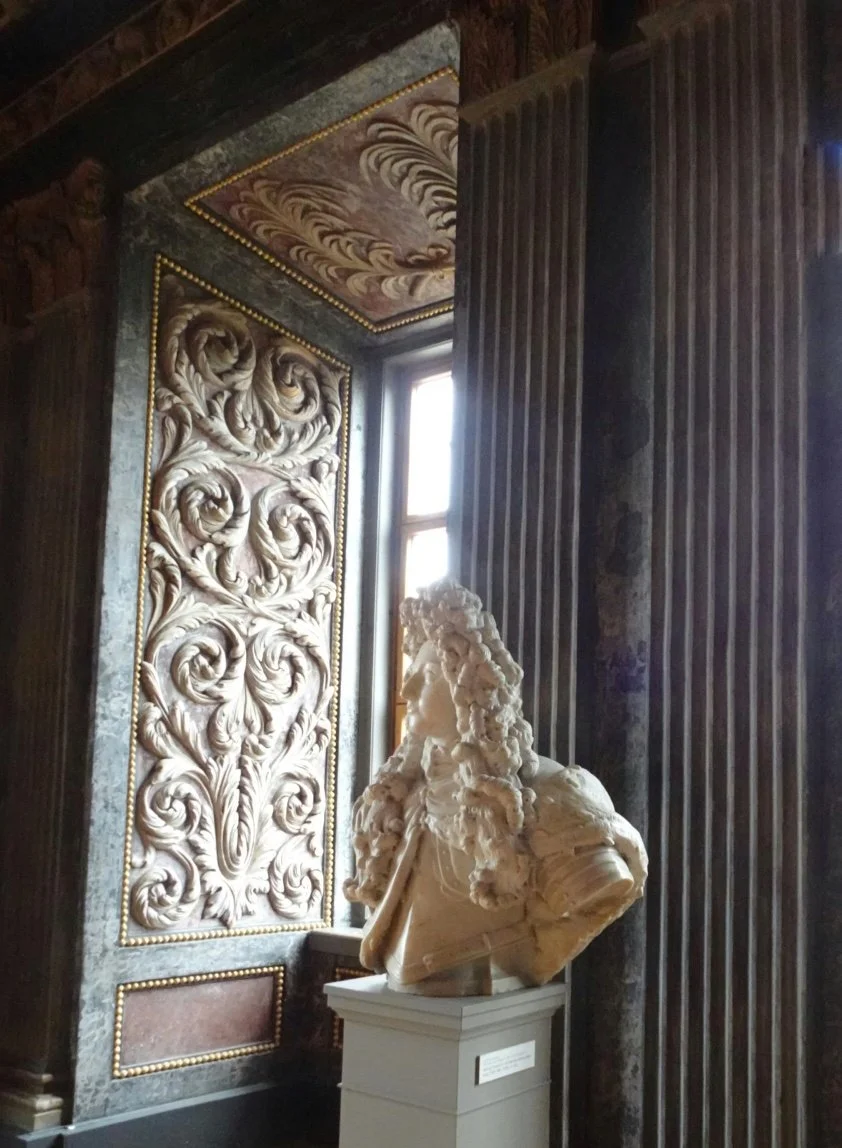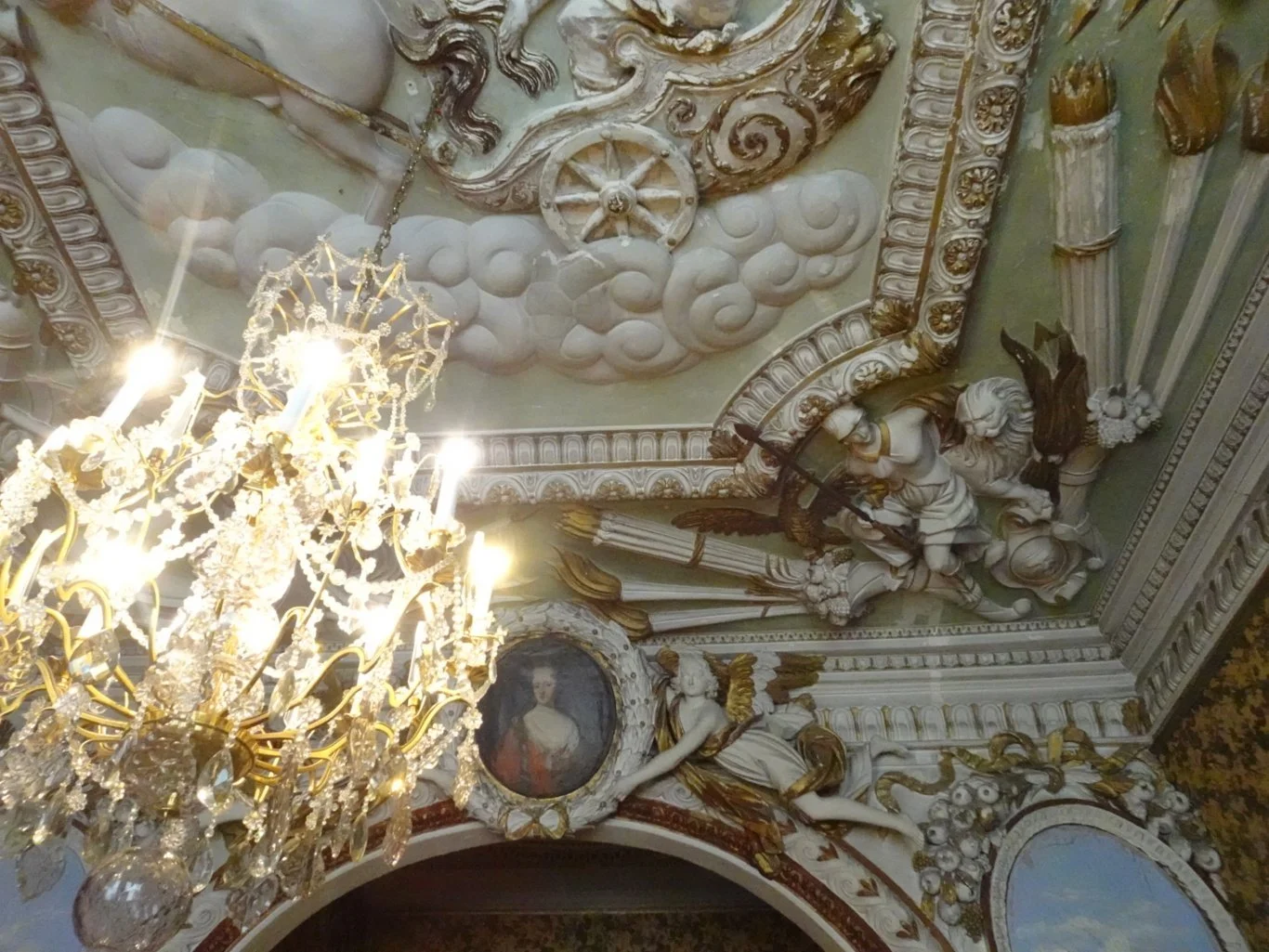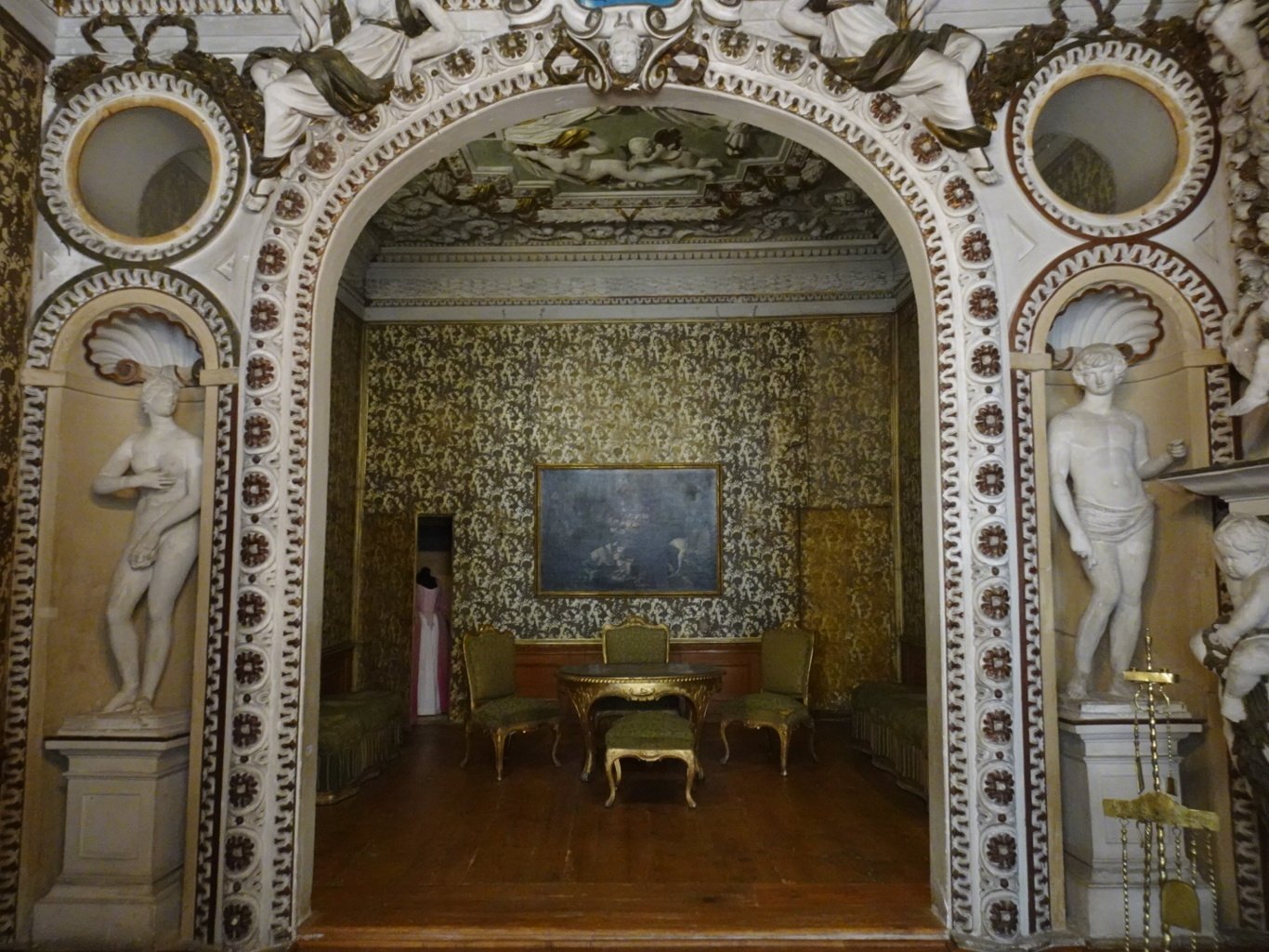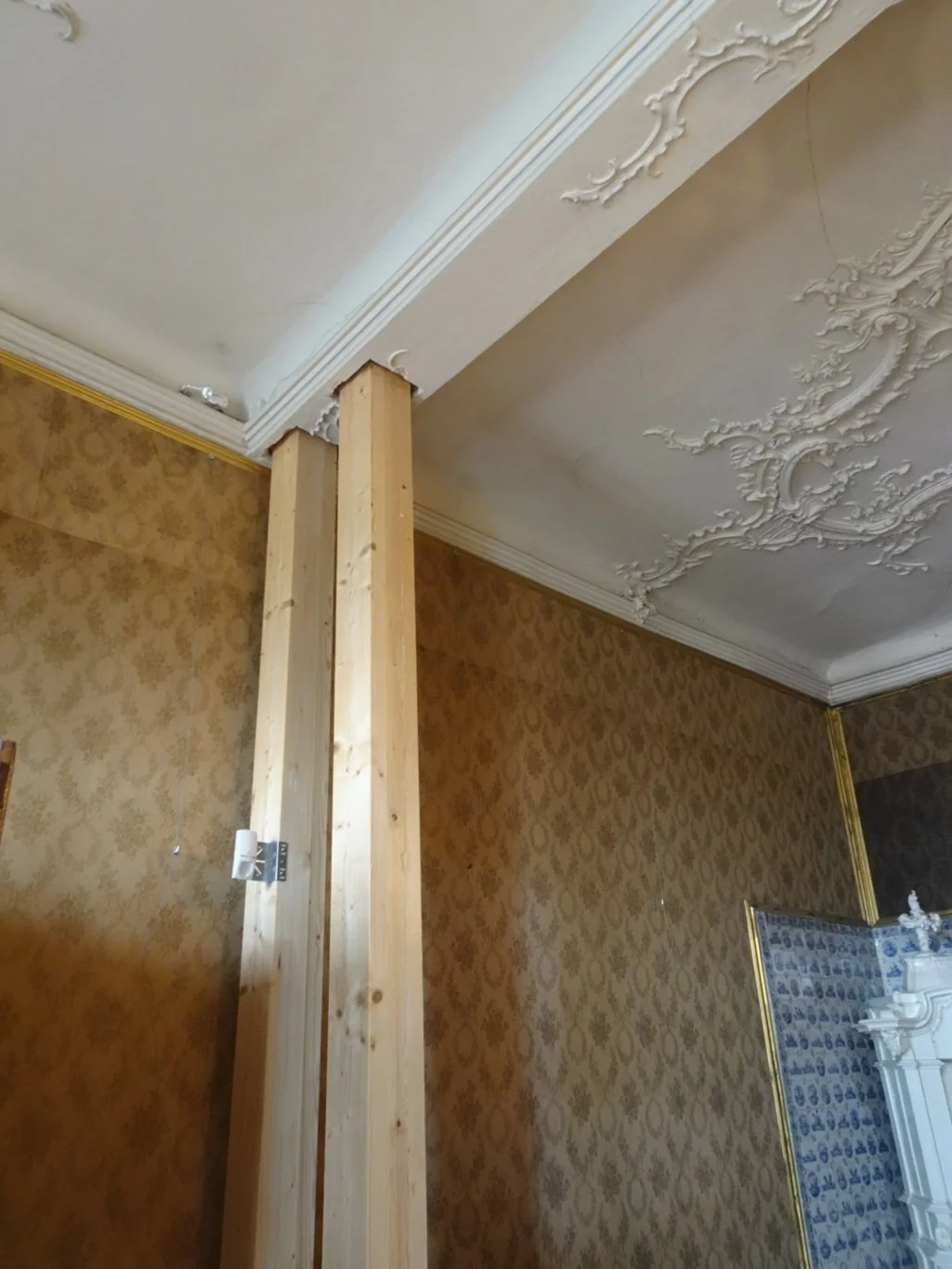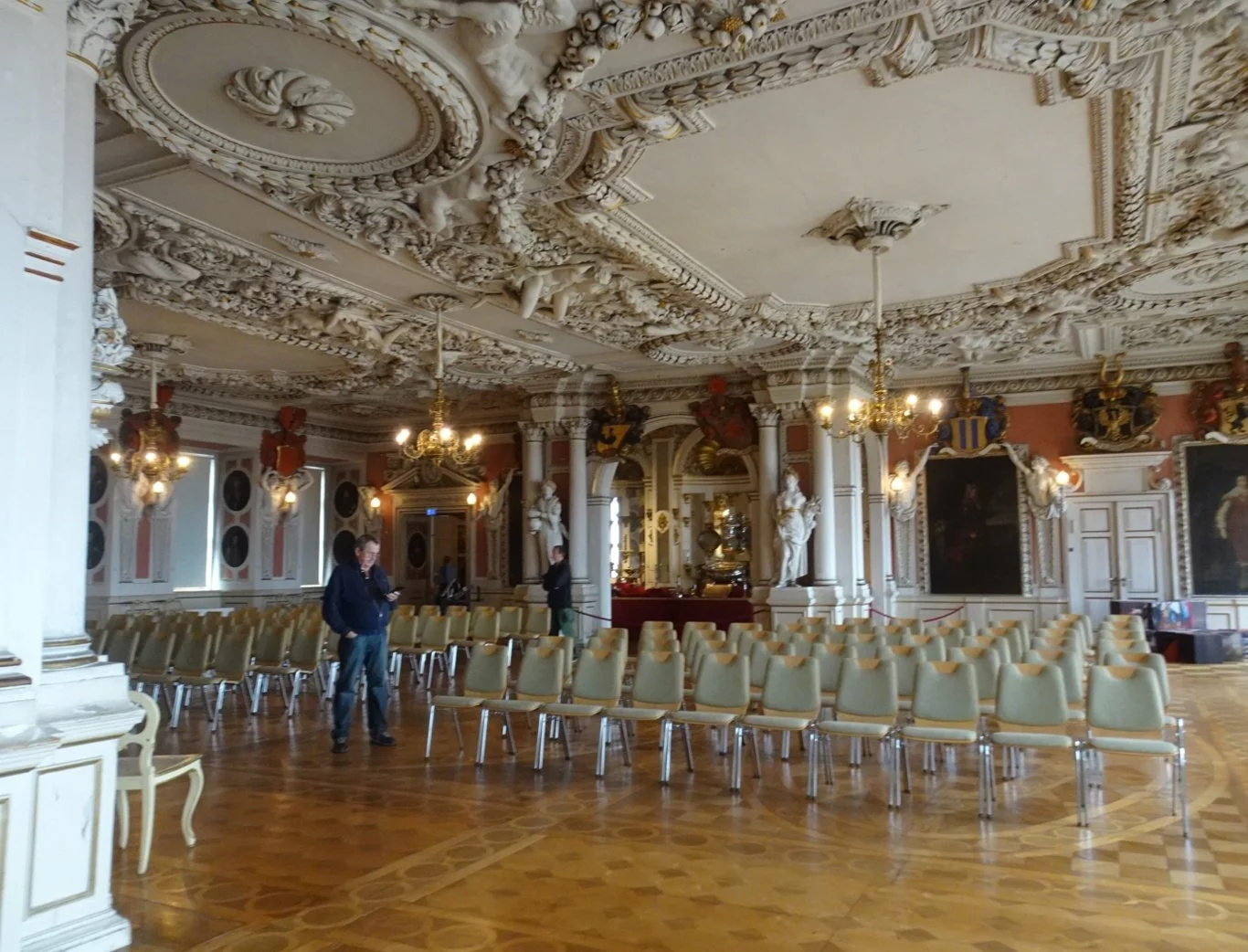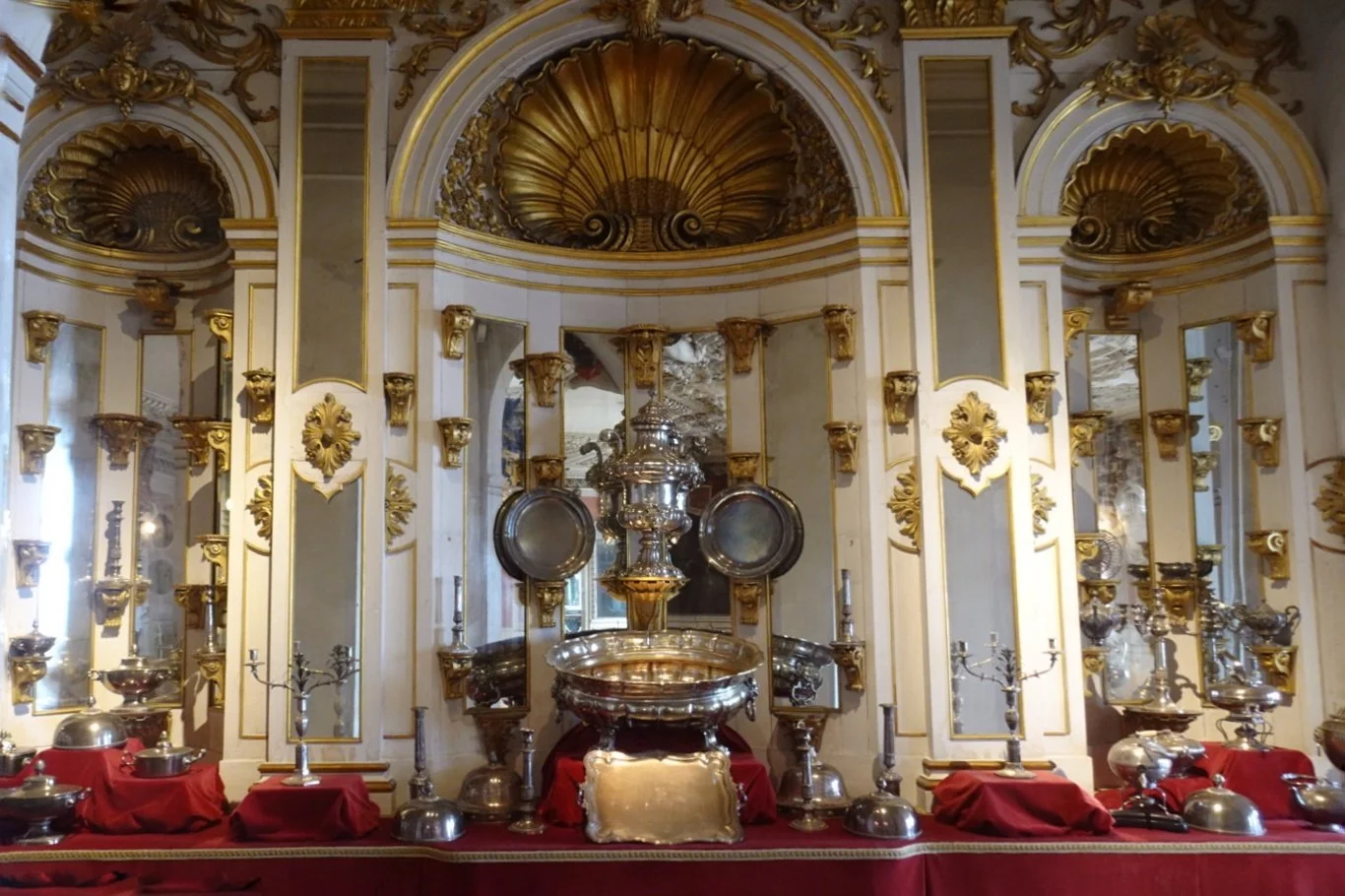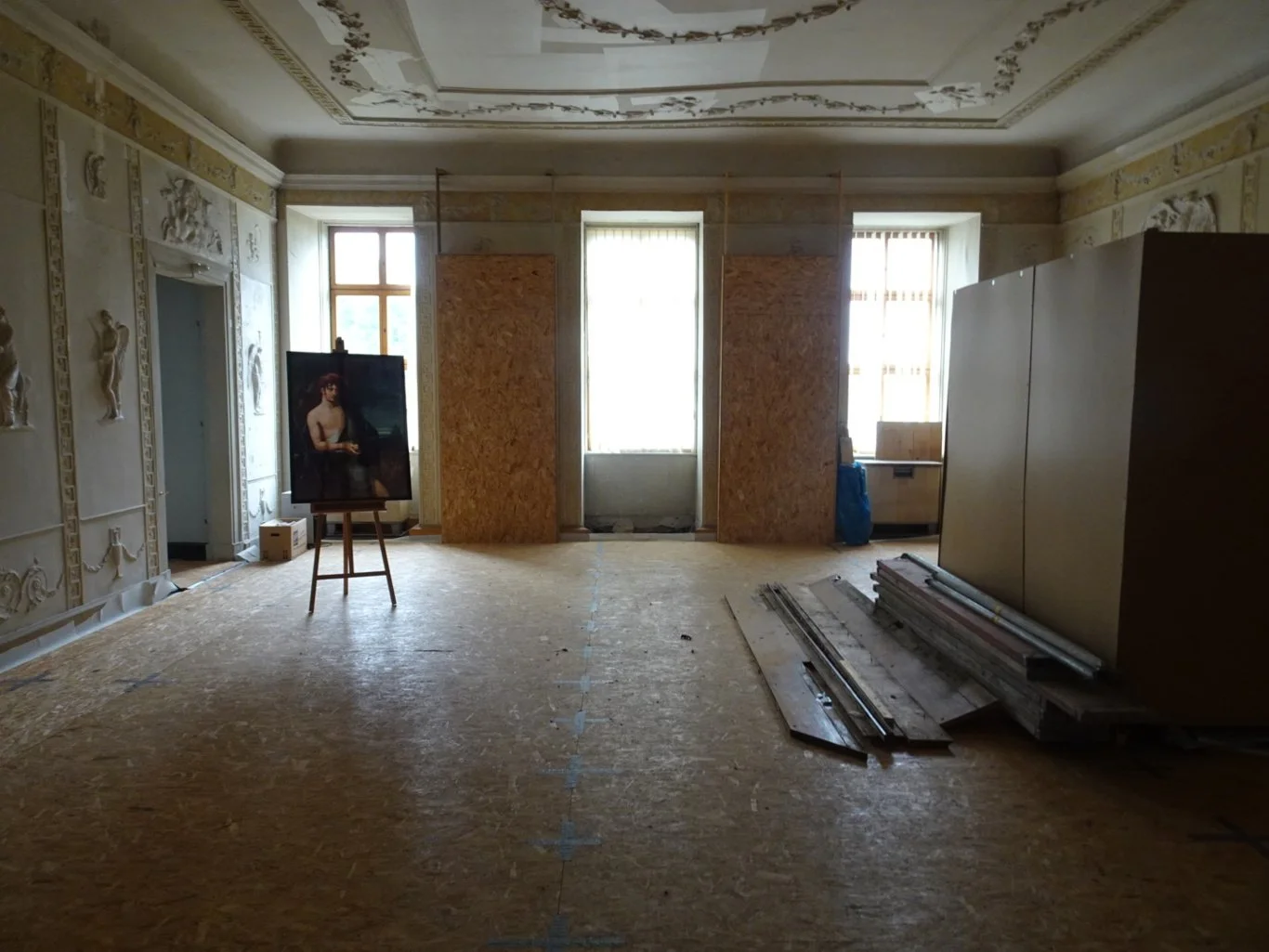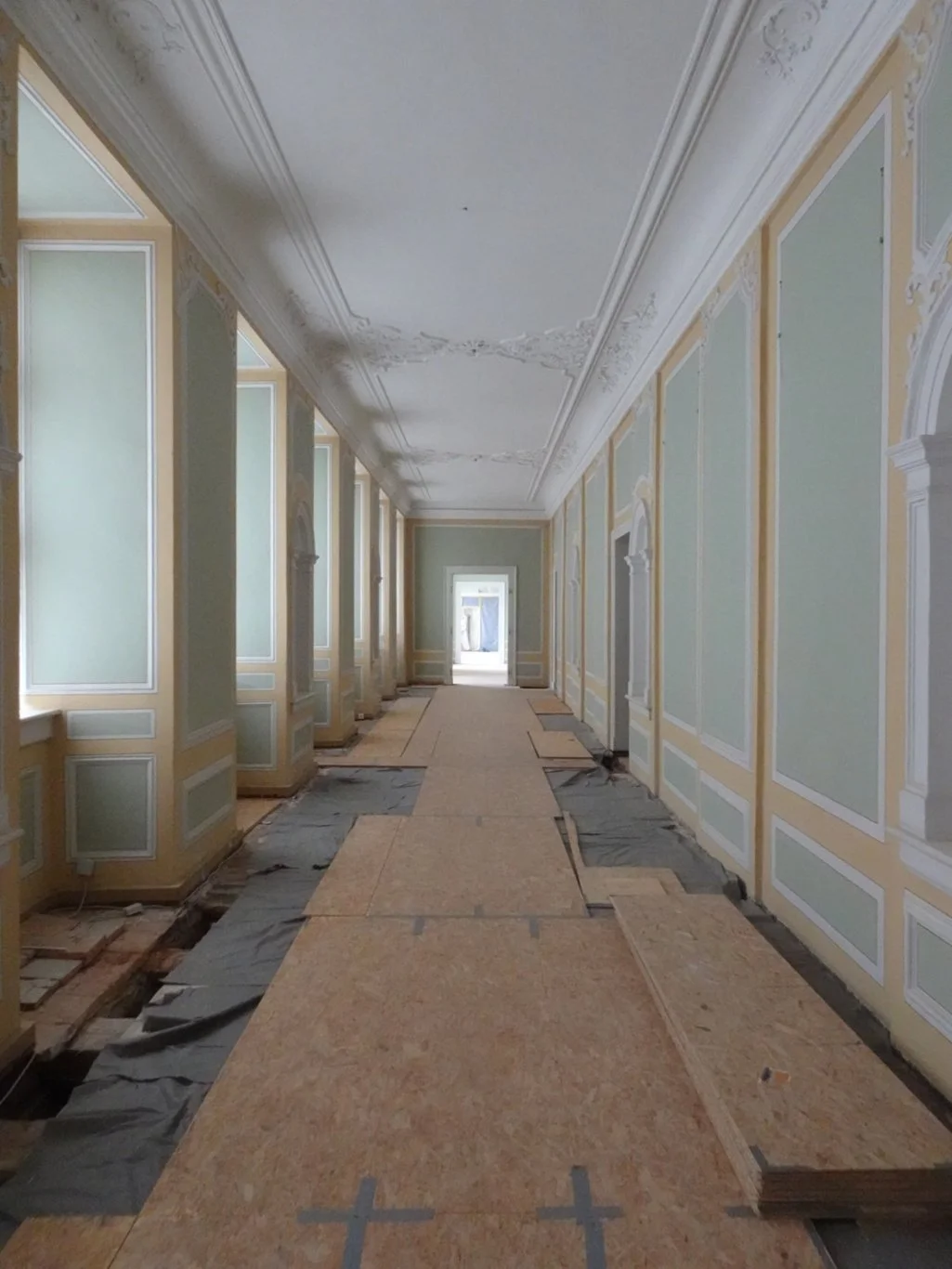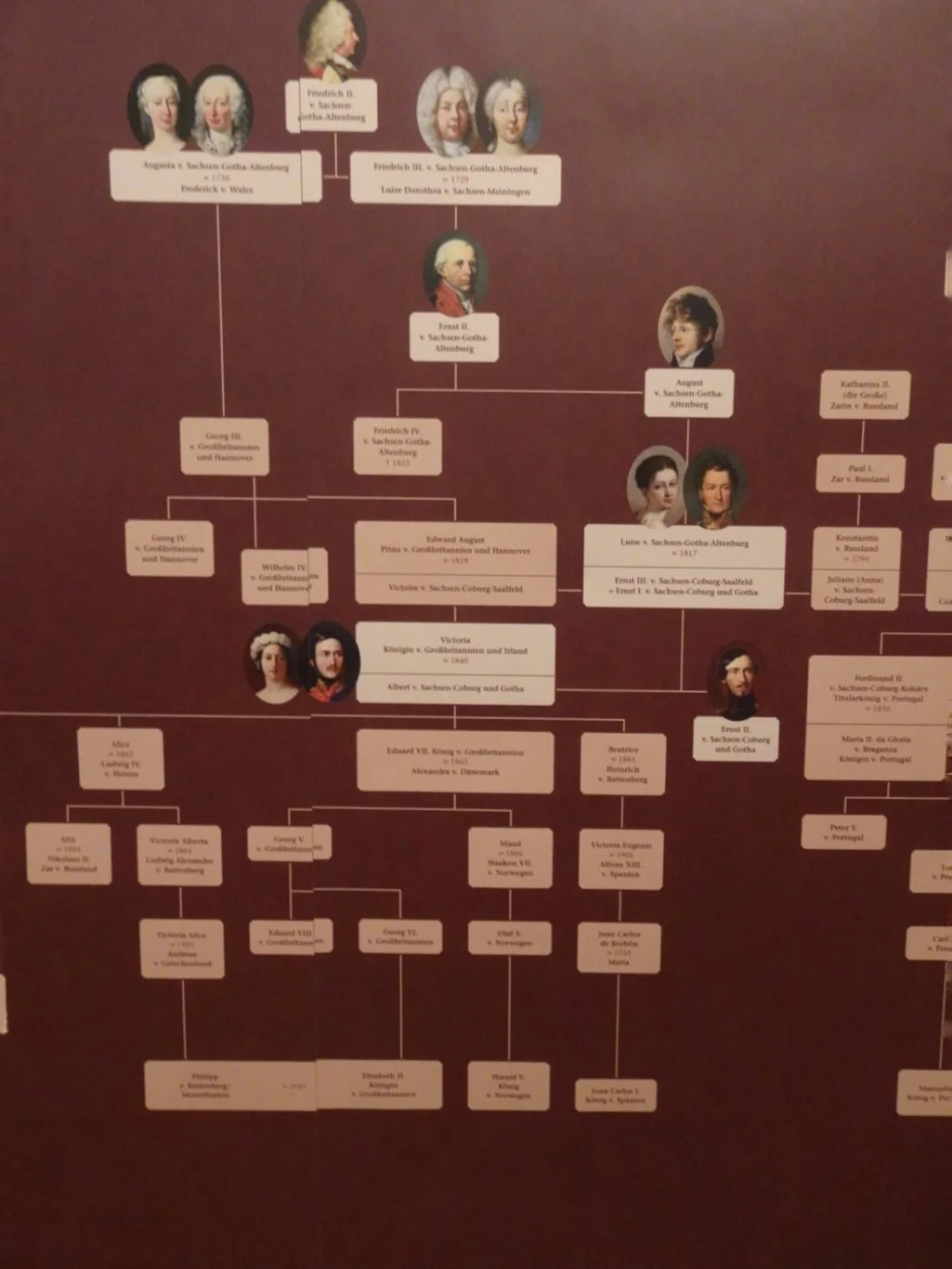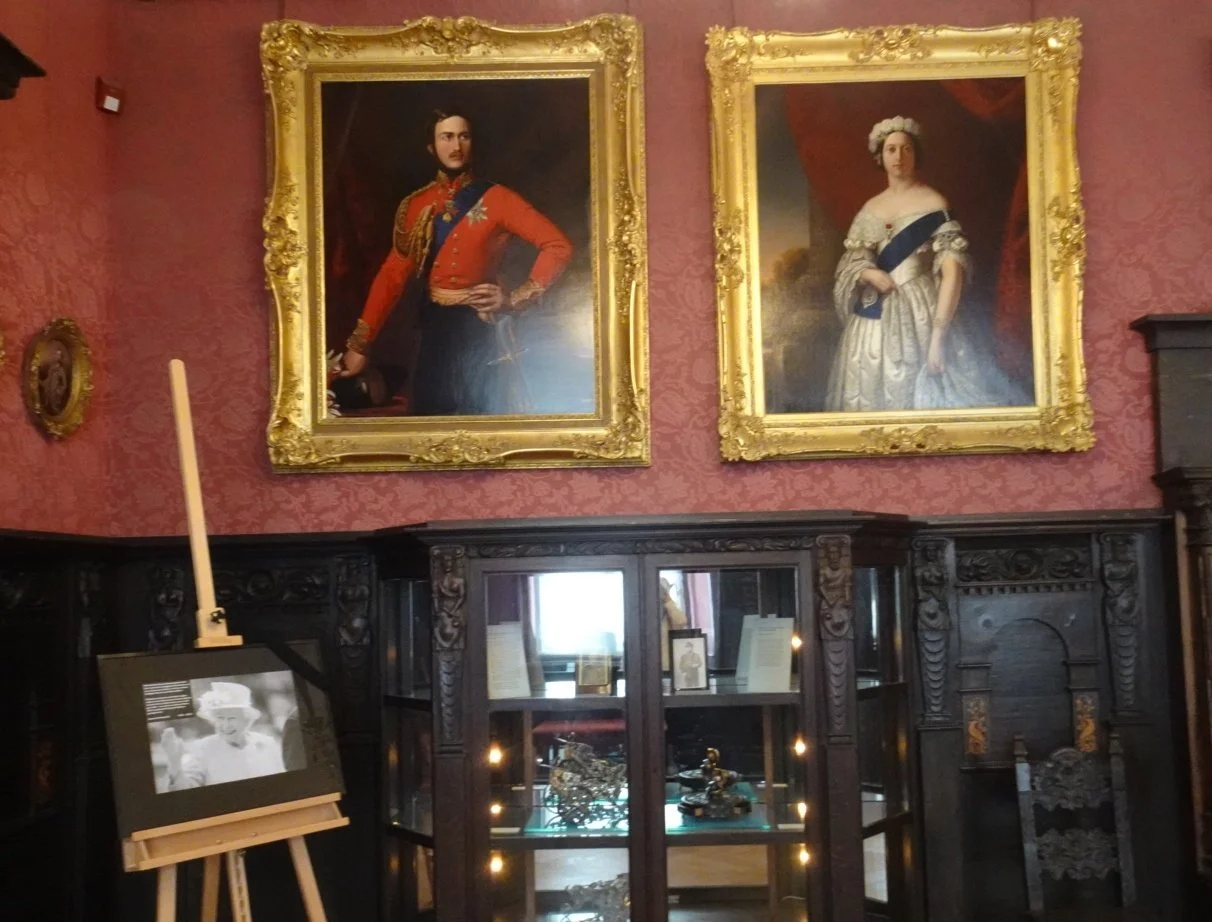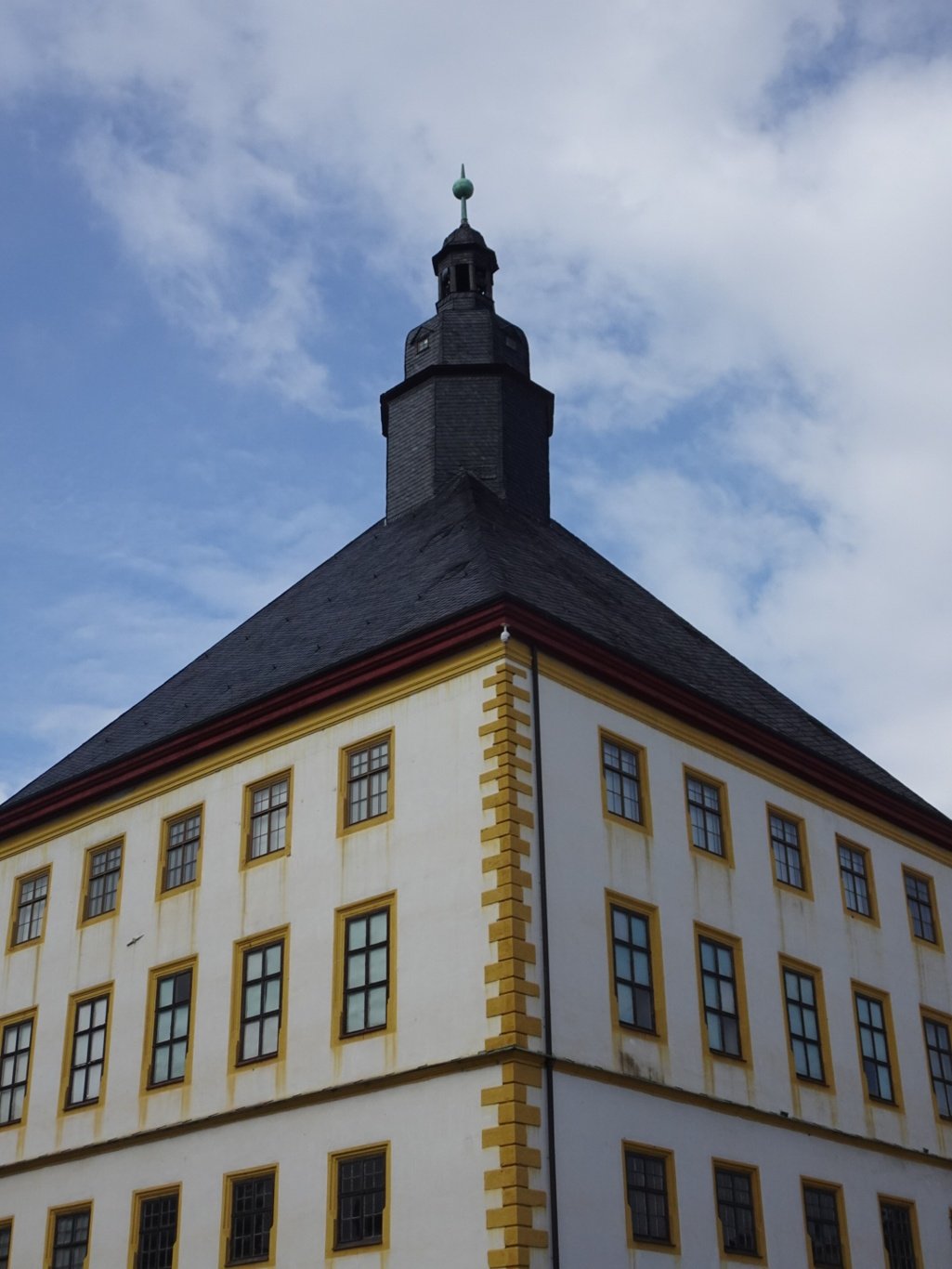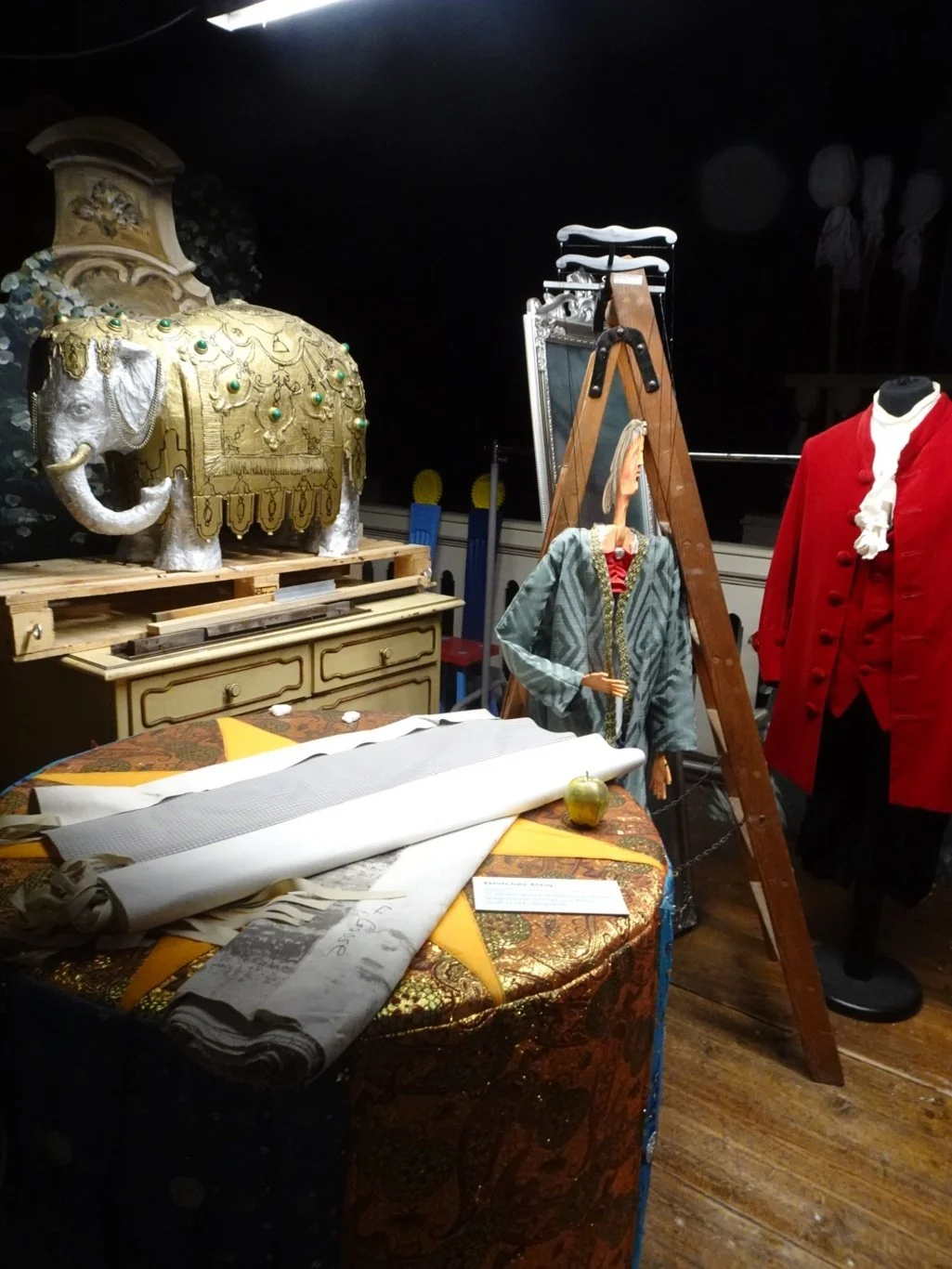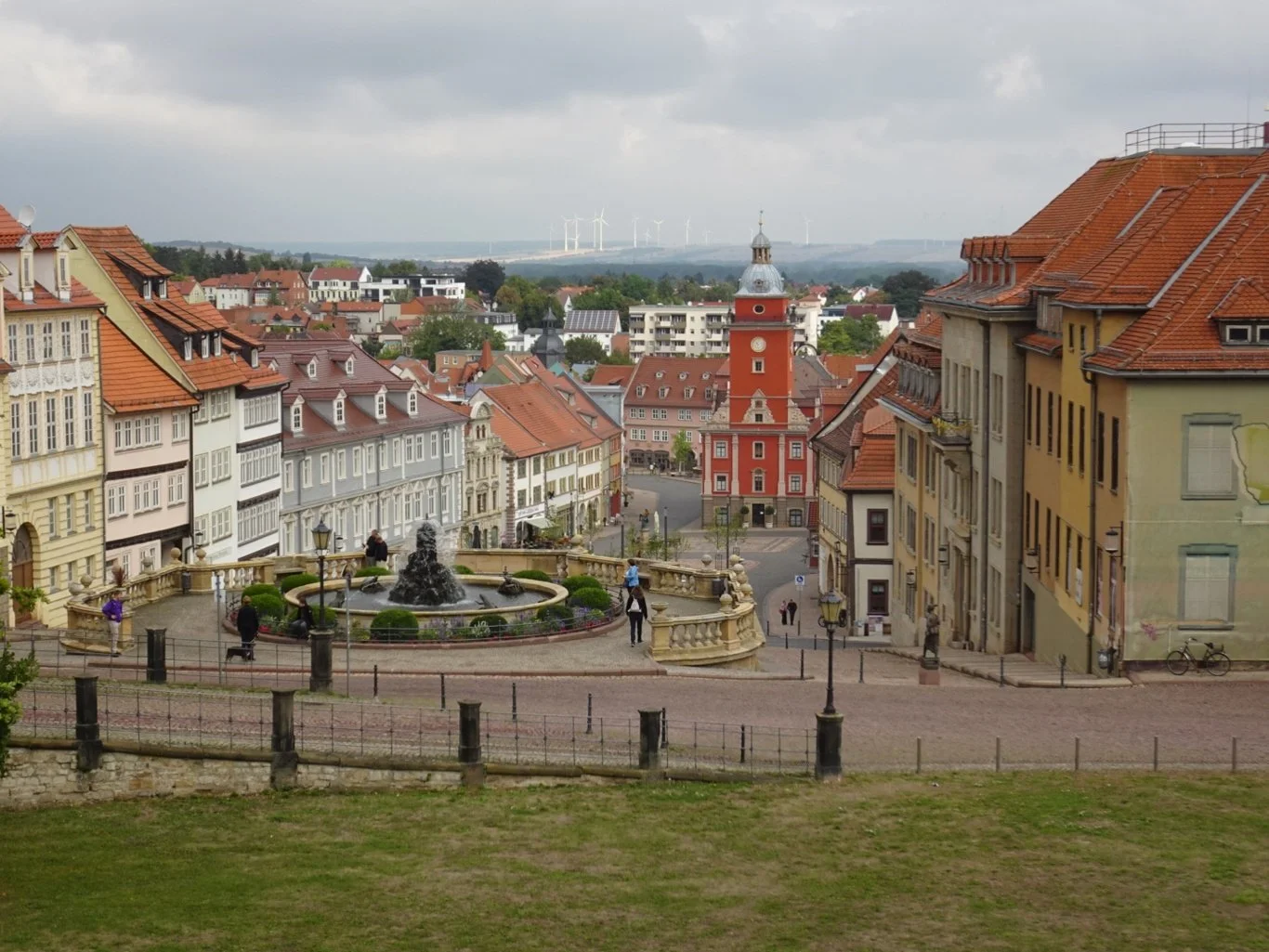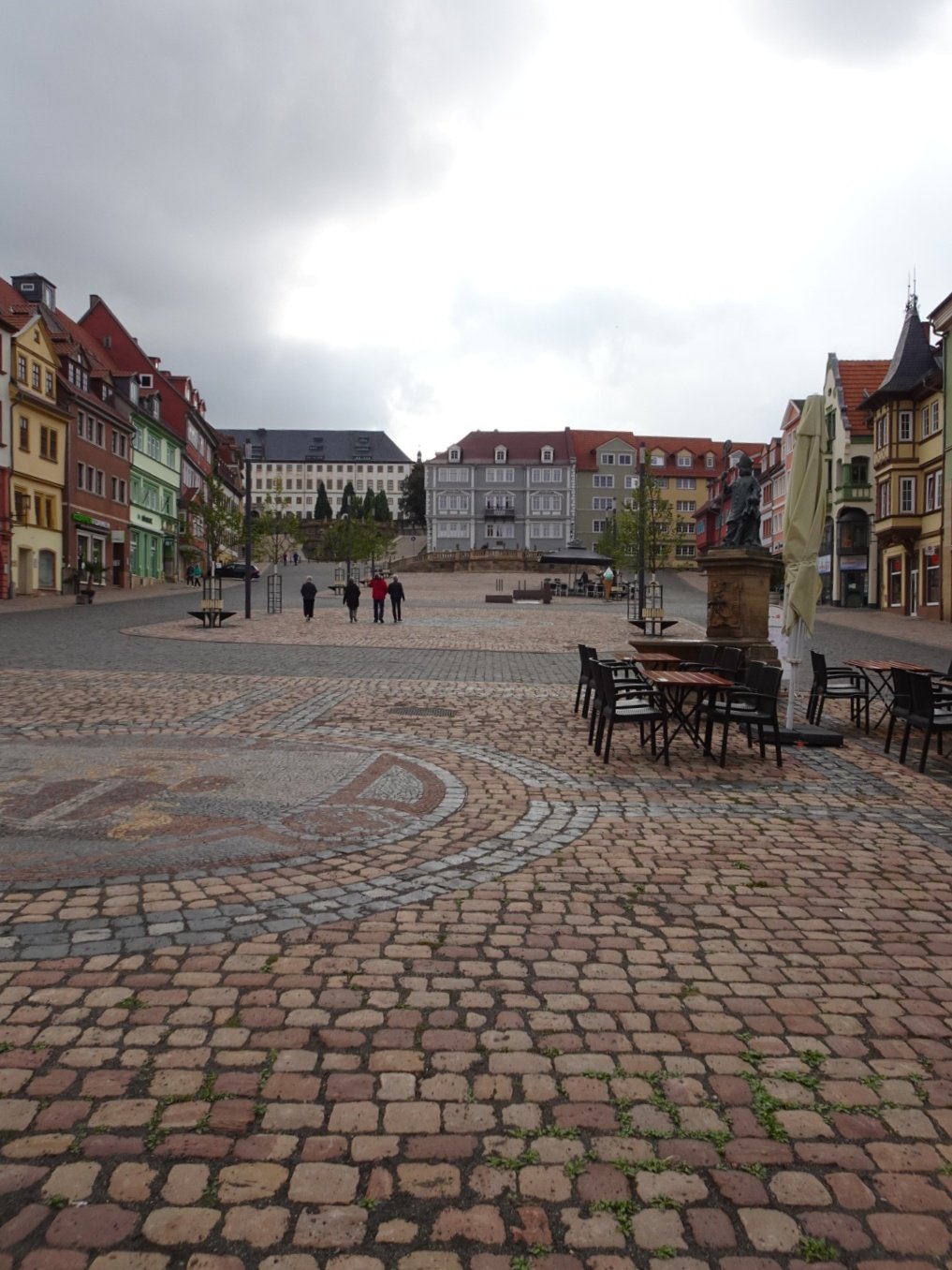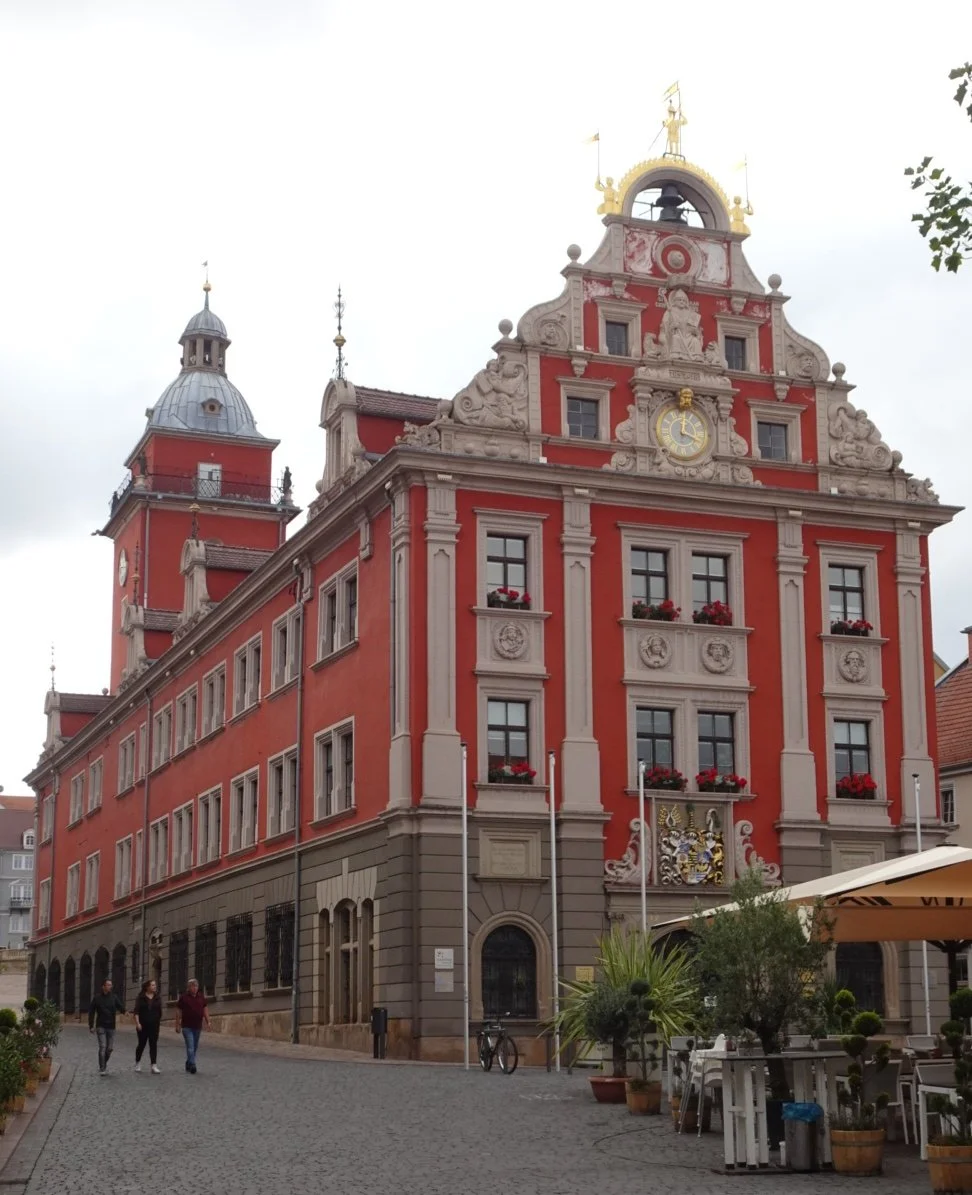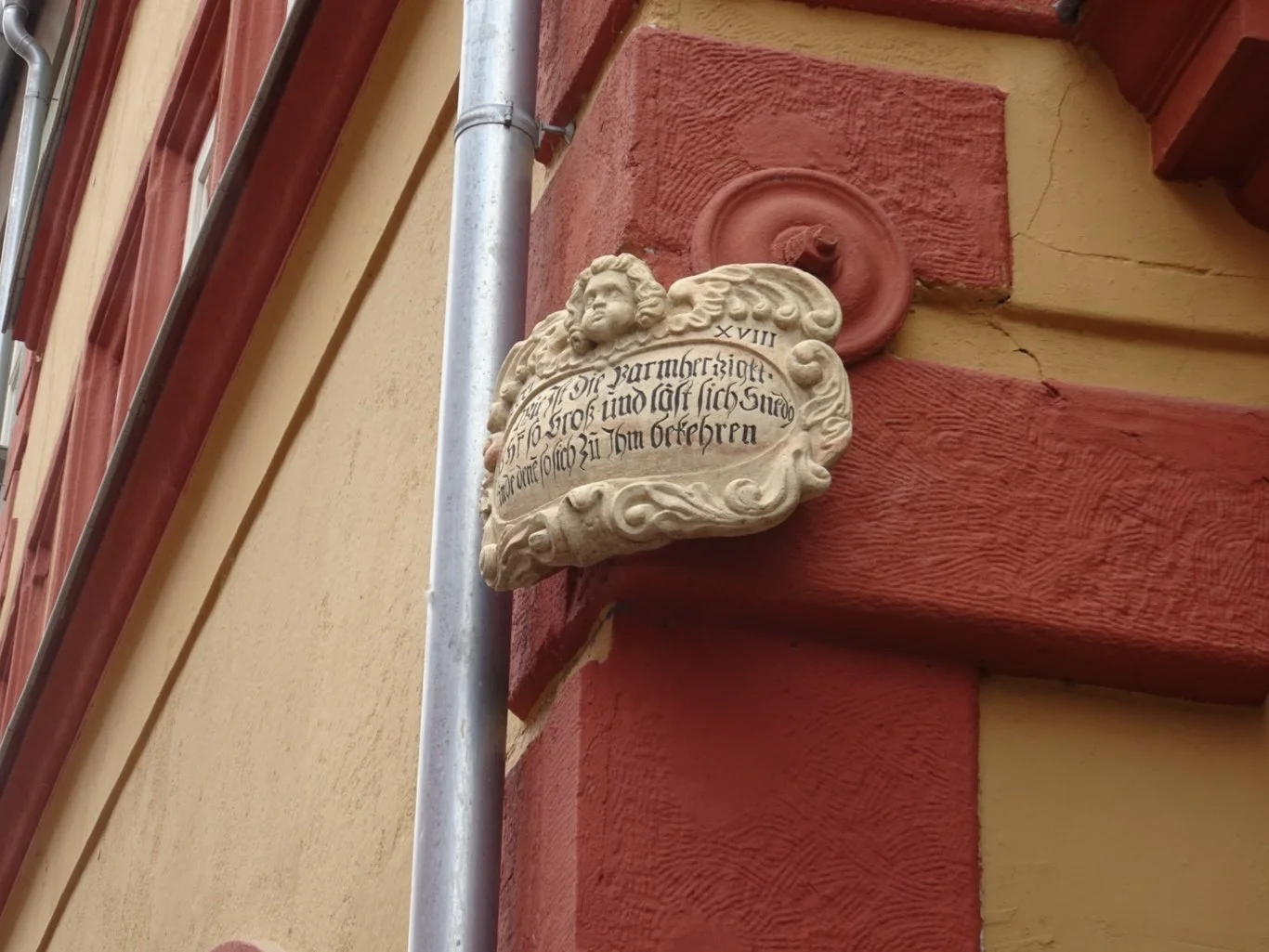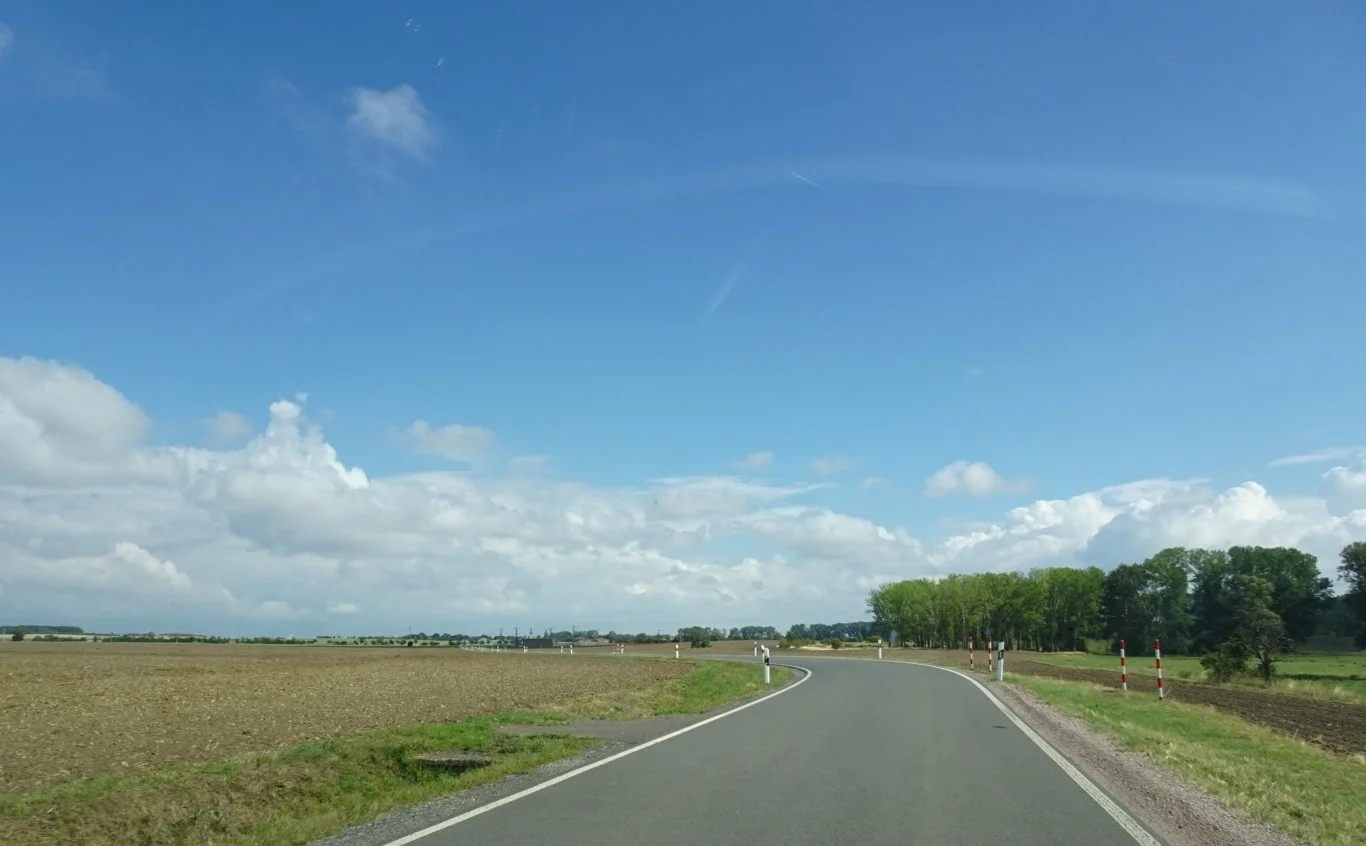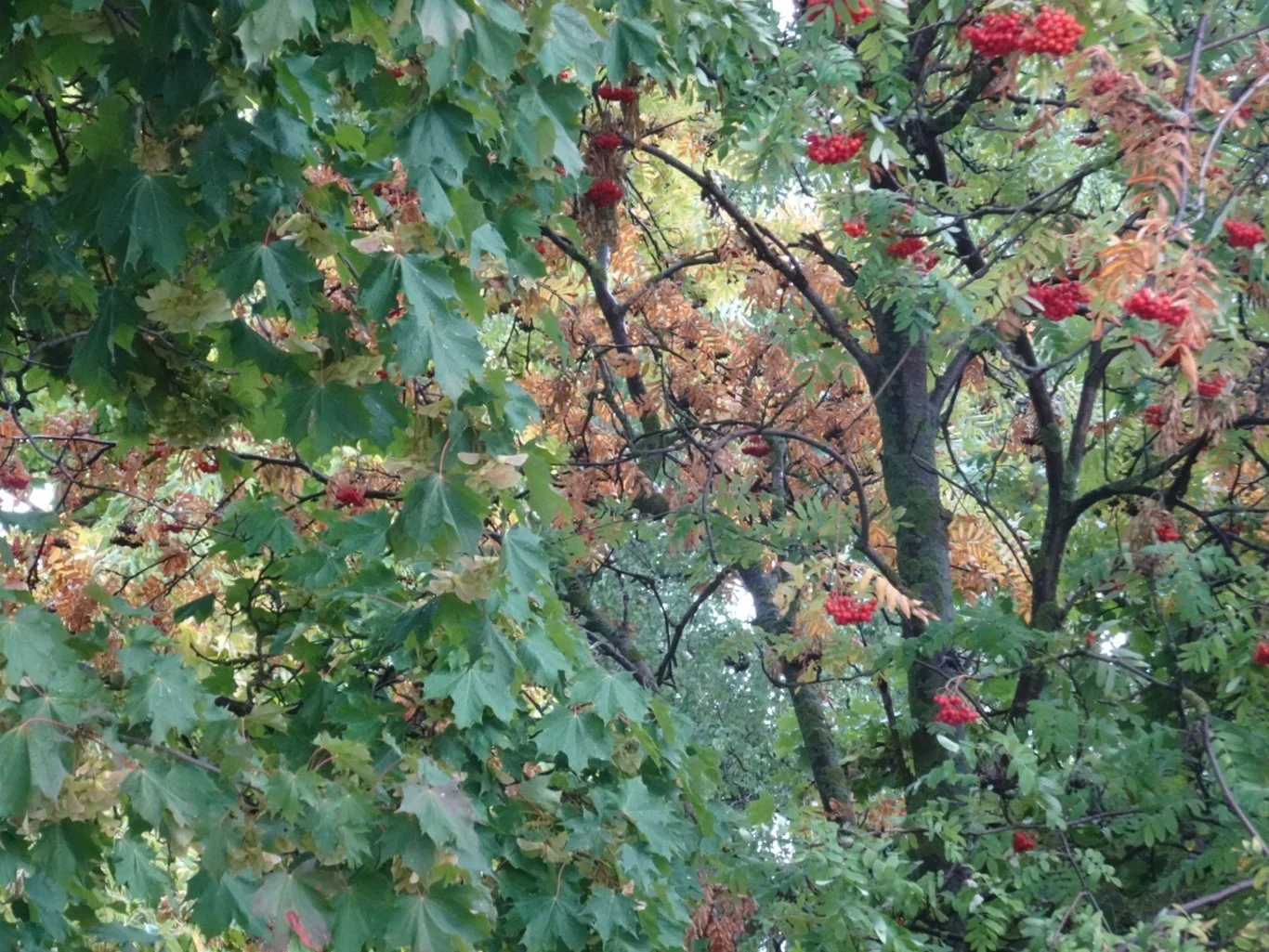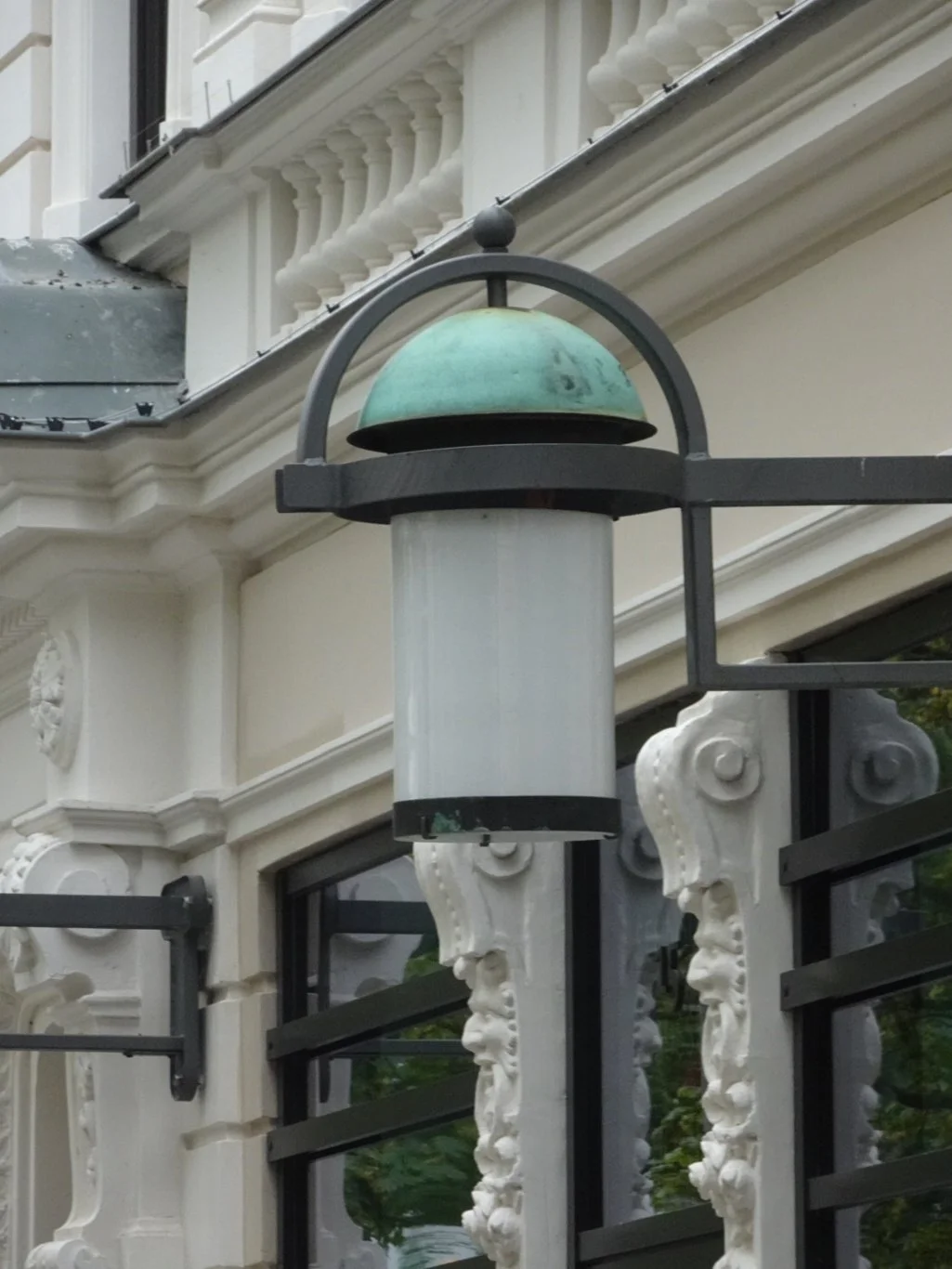Sunday in Gotha
The premiere of Samson, the opera we had come to see here was not until 6pm this evening, but with a talk from the director and our friend Volker at 5pm, we thought we’d better engineer lunch in our plans today. A shortish day out then, to a nearby city, Gotha, where there’s the Friedenstein Castle to visit too.
For the most part, our journay was along the autobahn and for the twenty or so km there was a fairly constant parade of powerful cars zipping past us at some unbelievable speed. It was a relief then, to take the side road to Gotha and catch sight of the two towers of the Friedenstein Castle way there on the horizon.
The design of the castle is assymmetrical and the scale of it way too large for me to capture in one shot, I found!
We made our way into the “Hof” - the yard - and simply followed everyone else. We knew there was a theatre to see here and that the castle itself was open, but not much more than that.
We knew also, of the connection between our Royal Family and the city of Gotha, since Queen Victoria’s husband, Prince Albert, was a member of the House of Saxe-Coburg-Gotha which originated here. In fact, as I’d googled to find out more about the city before we left, I came across a touching page on the city’s website following the death of Queen Elizabeth..
But whether there had been a big party here last night or what, the untidy state of the Hof this morning was a little disappointing.
Whilst my hero bought our entrance tickets, I browsed the giftshop, noting the titles of the books here on the table. Ever since I started coming to Germany as a teenager, the Royal Families of Europe have held great fascination for the German people and this interest was apparent here.
One title in particular stood out. I guess that we’ll soon find out, though since this book was written in 2018, some of the ideas might need a bit of an update.
Into the castle proper then, and to a hallway where a large group was standing listening to a commentary from their guide. A member of the castle staff saw us come in and heard us speaking English, so advised us to bypass the group and found a guidebook in English for us to use. As we started to read, we realised the guide was merely reading the book out loud - in German of course.
The first room was a gallery of the previous occupants of the castle, including, top right, Prince Albert’s father (or grandfather?)
The next room gave a better feel of the style of the castle though. Previously, the castles we’ve visited in Germany have been of the fairy-tale kind, with frescoes of legends on the walls painted in bright colours and appearing as if from a story book. This could be the first Baroque castle we’ve been to here and it came as a little surprise.
Though the style was certainly in keeping with the Baroque palaces we’ve seen, here it seemed clumsy and lacking in finesse. Perhaps that was due to heavy handed renovation?
Some of the furniture had been removed, so though we were viewing the Duke’s bedroom, there was no bed to be seen. It didn’t matter at all, we were enjoying wandering through some interesting spaces and it soon became clear that we were also walking through a bit of a building site.
In places, the ceiling was propped up with wooden supports and in others, the floor was taken up for repair.
This part of Germany remains less wealthy than further west and it’s clear that even after thirty years there is still a great deal of work to be done. It’s good to see places like this being used for events, then, hopefully bringing in some funding so that the restoration can continue.
At this end of the castle, there was certainly quite a bit of “stuff” to be stored and displayed; collections of porcelain (Meissen is just up the road) pewter and other fine tableware.
Just around the corner, we found this strange hanging above our heads. Created from colourful feathers, it seemed in remarkably good condition. I’ve never seen anything quite like it!
Of the treasures in the next few rooms, including silverware, wax castings, shells and fine woodwork, this dear little elephant is the object I’d choose to bring home. It dates from around 1710 and was created by a goldsmith with the wonderful name of Dinglinger. (Yes, really) What a little treasure!
Beyond the audience room and the treasure collection, we entered the real building site.
There’s certainly a great deal of work to do here but it’s interesting to see the bare bones of a structure like this.
There was one last room on this level, before we went back downstairs and through the door back out into the Hof. Pride of place here was a large family tree showing how descendants have ruled countries in Europe and beyond. Of course, we had a particular interest, realising that before too long, another line will now need to be added to bring the tree up to date.
The next room focused on Prince Albert and Queen Victoria however, and there to one side was an easel with a photograph of their Great Great Grandaughter, Queen Elizabeth II .
It was another of those moments that just seem to catch us unaware. I have read the same in the papers, noted by columnists who write about being suddenly overcome by emotion. For much of the time, being away from the constant news feed, we carry on as usual, only catching up from time to time and being reminded that so many aspects of our daily lives will change. This morning, I read about banknotes being updated - of course, but just another small feature that will be different.
Anyway, we both dried our eyes, took a deep breath and moved on, feeling appreciative of the kindness shown by people the world over.
We still had the theatre to visit and that was in the “other” tower, back by the car park.
The Ekhof Theatre was named after Conrad Ekhof, a leading actor of the 18th century German stage and is considered to be the oldest working Baroque theatre in the world. It’s a fabulous little theatre and the exhibition in the adjacent rooms gives a really great insight into the clever workings of the stage. There were wind, rain and thunder machines to try, demonstrations of how scenery can be changed in an instant and working models to illustrate the design.
Frequently stated as the highlight of a visit here, I can well imagine that to be the case if a play or other live performance was taking place. We simply had to use our imagination!
By now, we were getting hungry, though, so mindful of the beautiful view we’d had from up in the castle, we decided to make our way down into the town where we hoped there would be somewhere to find some lunch.
It being Sunday, things were very quiet indeed and at first, it appeared the only offerings were pizza and kebabs. Not quite what we had in mind.
Thankfully the Rathauskeller was open and serving hearty lunches which were more the kind of thing.
We’ll remember Gotha as a charming historic city with some lovely corners, but it was time we were getting back to Weimar.
Rather than brave the autobahn once more though, we took the quieter route, over the high plateau and around Erfurt, arriving in Weimar not much more than an hour later.
Either I just noticed it or it snuck up on us when we were out, but Autumn seems to have arrived.









